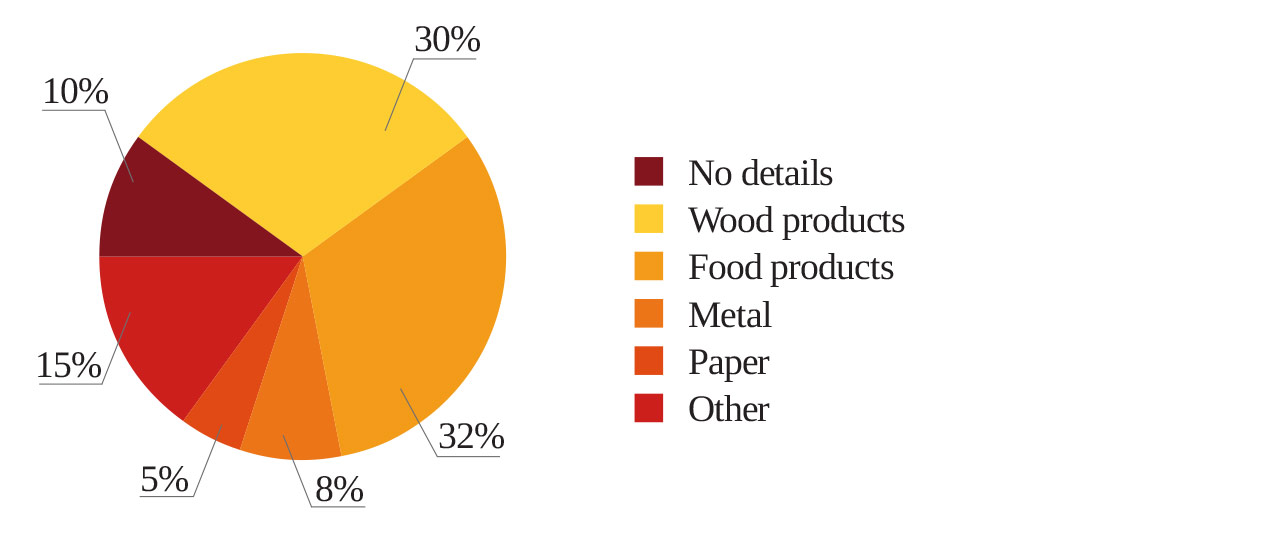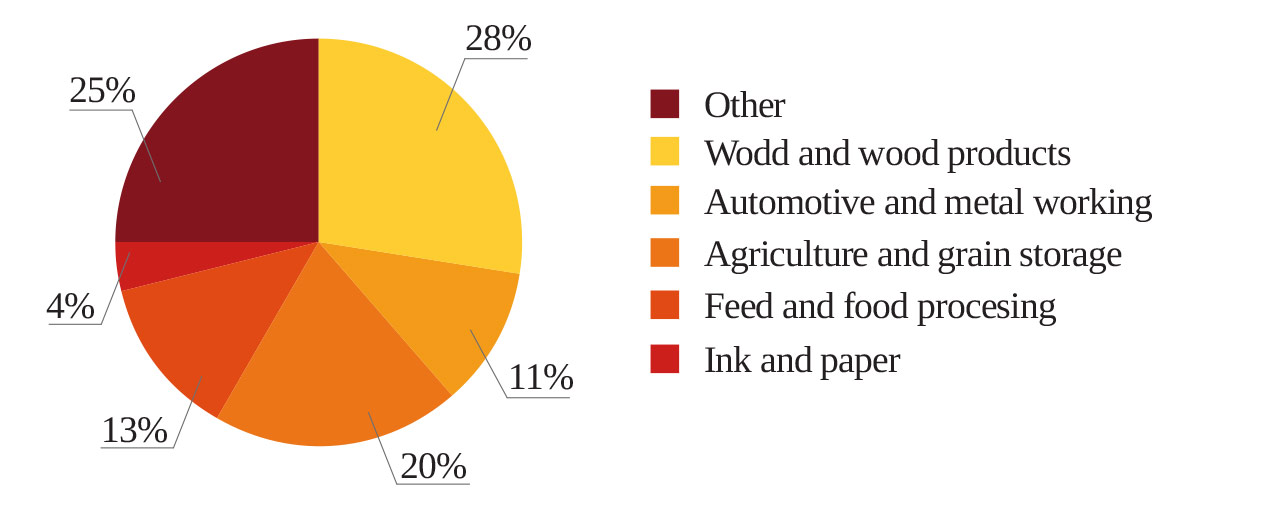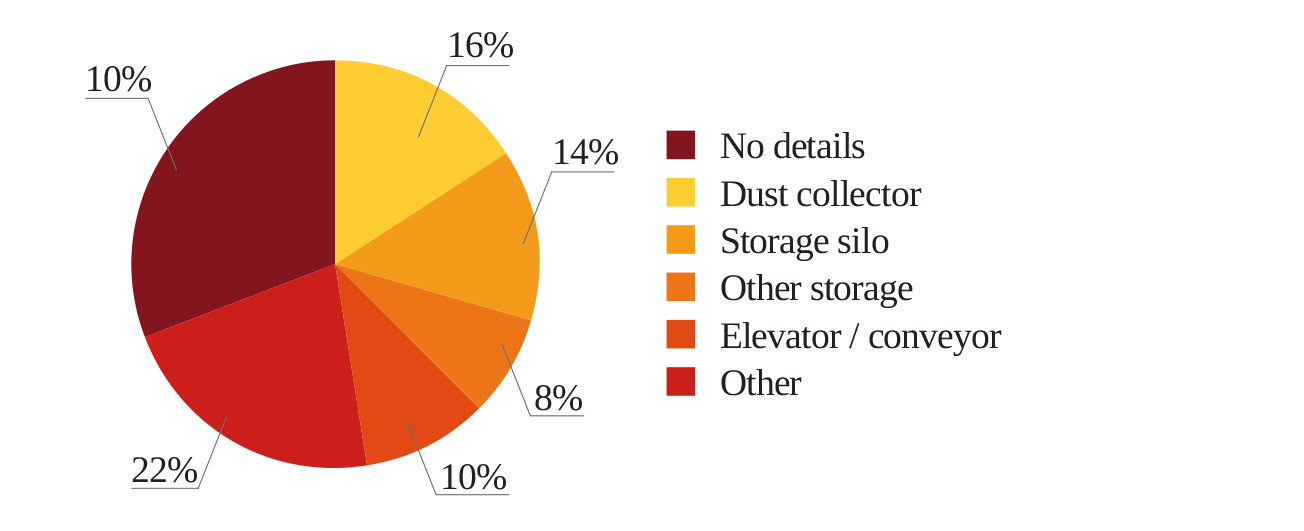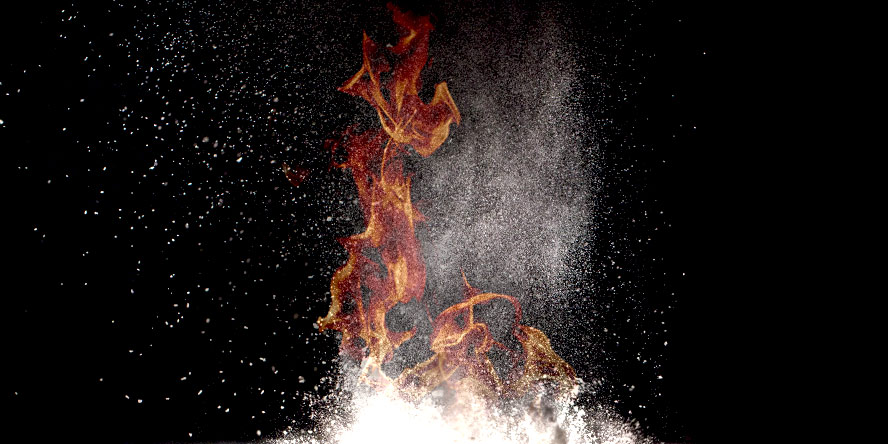Below you will find statistics on accidents involving combustible (explosive) dust. The data published in the report “2017 Combustible Dust Incident Report – Version #1” refers to the incidents of 2017. They show that the greatest risk of an accident involving combustible dust is associated with the processing or storage of wood and food dusts (including feed and other animal foods). A factor increasing the risk of such an accident is equipment and apparatus for dust extraction, storage and handling (feeders and conveyors).
Incidents involving combustible dust
Wood dusts and dusts of products used in the food industry account for the largest number of all the accidents recorded (62% of all incidents in total). This group includes wood dust, wood dust contaminated with chemicals (OSB, MDF, etc.), sugar dust, cereal dust and cocoa.

Number of incidents by industry
Taking these statistics into account, it is not surprising that incidents with flammable dusts occur most often in woodworking industries and the food industry in general. It should be noted that there are no industries in this diagram where the risk of an accident involving combustible dust is lower, but the potential effects of the incident may be catastrophic. An example of such an industry is certainly the energy industry – power plants and combined heat and power plants.

Number of incidents by type of equipment
In terms of equipment, the highest number of incidents involving combustible dust occurs in dust extraction systems (dust filters and cyclones) and in storage silos (a total of 30% of all incidents). Taking other forms of storage into account, it is found that 38% of all incidents occurs during storage or dust extraction. Another important group of devices are various types of elevators and conveyors (10% of all incidents). In this group, bucket elevators and conveyor belts should be given special attention.

Expert’s comments
The results of the report are in line with our many years of experience. Accidents with combustible and therefore explosive dust are most common in the woodworking and food industries, including the production of animal feed (62% of accidents in total). At this point, it should be emphasized that the results presented above are of a quantitative nature and do not take into account the scale of events. This means that the report does not take into account industries where ignitions of combustible dust are relatively rare, but their effects may be catastrophic. An example of such an industry is the power industry (the explosions in Turów and Dolna Odra power plants). Therefore, such data should be analysed with a certain degree of caution, which will prevent us from drawing hasty conclusions,” says Bartosz Wolff, President of the Management Board of WOLFF GROUP.
Cloney, Chris (2018) “2017 Combustible Dust Incident Report – Version #1” | www.myDustExplosionResearch.com/2017-Report






